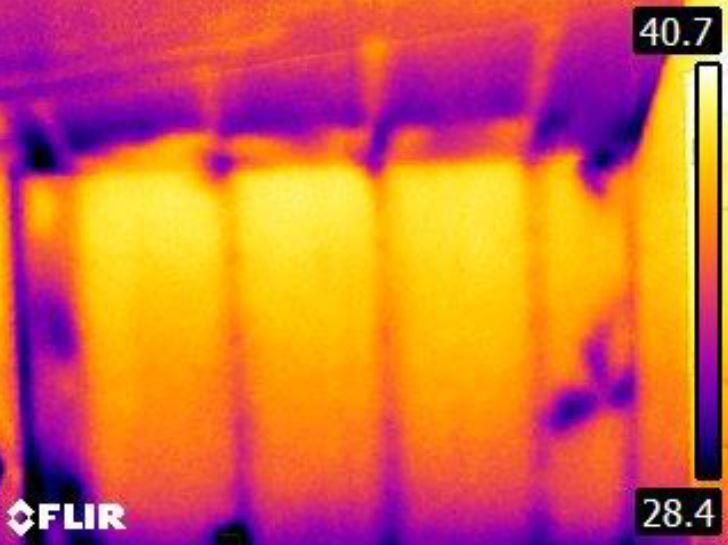Ceilings are not just cosmetic “caps” for interior rooms. They are also load-bearing floors for the spaces above. This is true even if that space is an unfinished, unconditioned attic. As such, we must be concerned with what a ceiling’s condition may be revealing beyond just the possibility of drywall or acoustic tiles falling on us. Is there an failing floor above due to excess loading or a structural defect? Why are the tiles or suspended panels loose? What’s the significance now and in the future of a stain? Your IR inspection must include the ceilings, and a follow-up as possible with your moisture meter.
Inspect for cracks, damage, loose coverings and tiles, sagging surfaces, and stains. Remember that garages must be separated from living spaces by an intact firewall, including any access hatches or stairs. Carry a lightweight step stool or a selfie stick to enable using your moisture meter to confirm the condition of any stains. Always report using the relevant IR “picture pairs” and meter views placed in the dedicated photo slots in the template.
The ceiling is damaged. This is a potential safety issue. Repair the ceiling as needed.
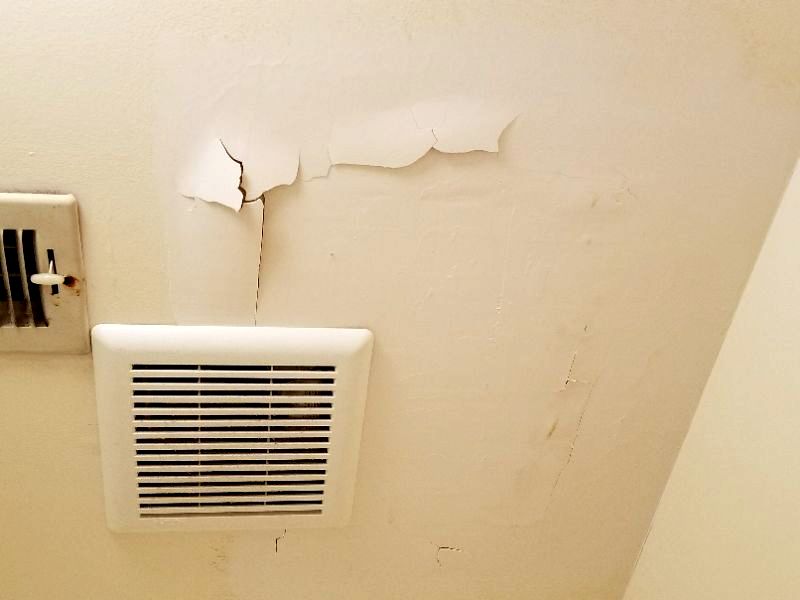
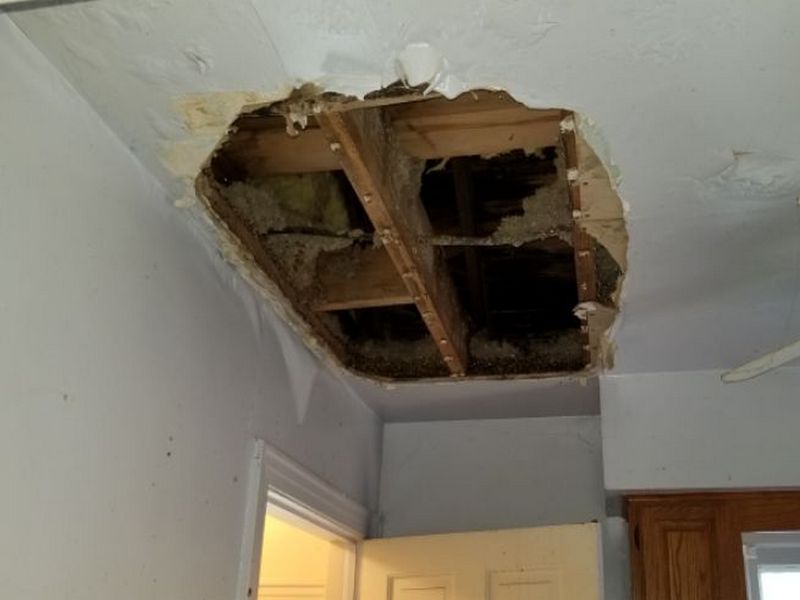
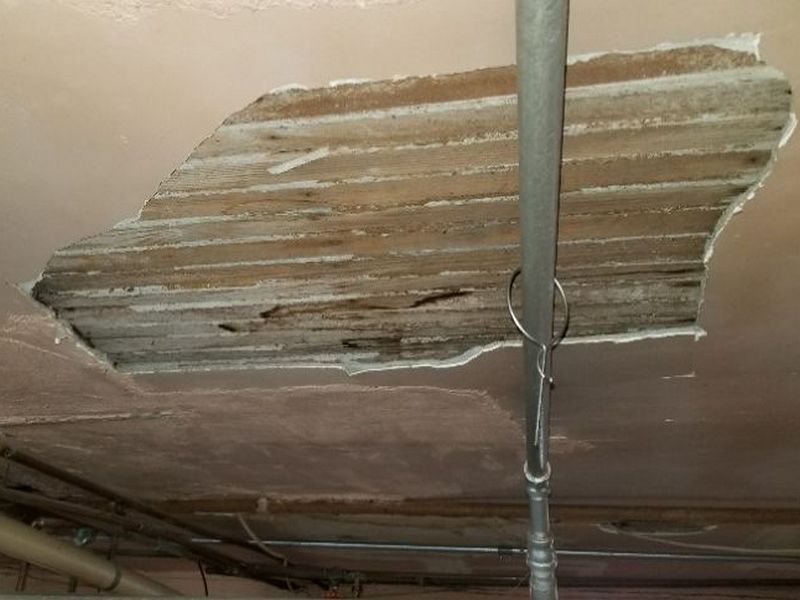
The ceiling is loose or sagging. The reason for this is not known, and may allow a failure and personal injury. Hire a contractor for an evaluation and repairs as needed.
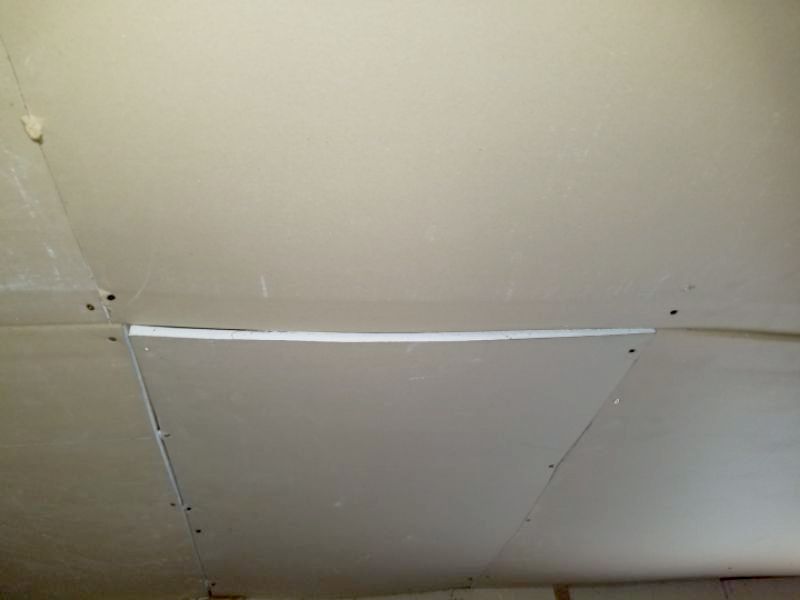
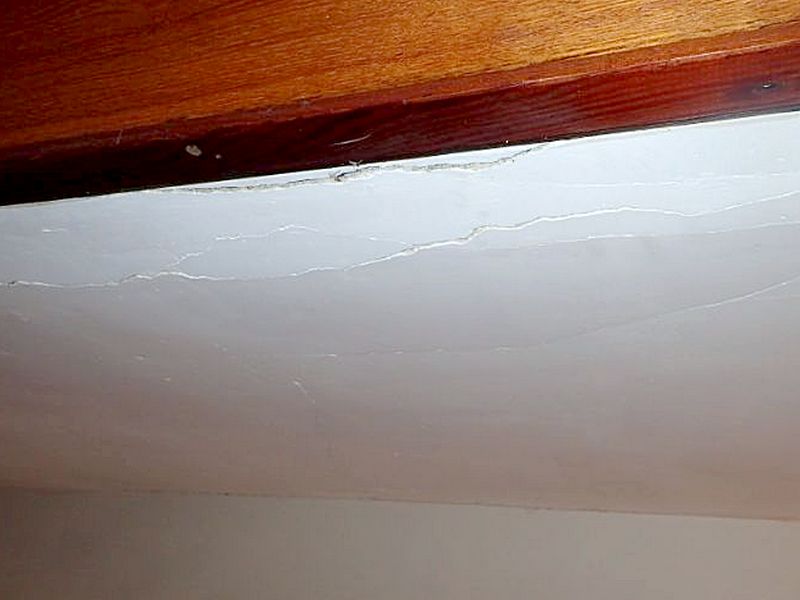
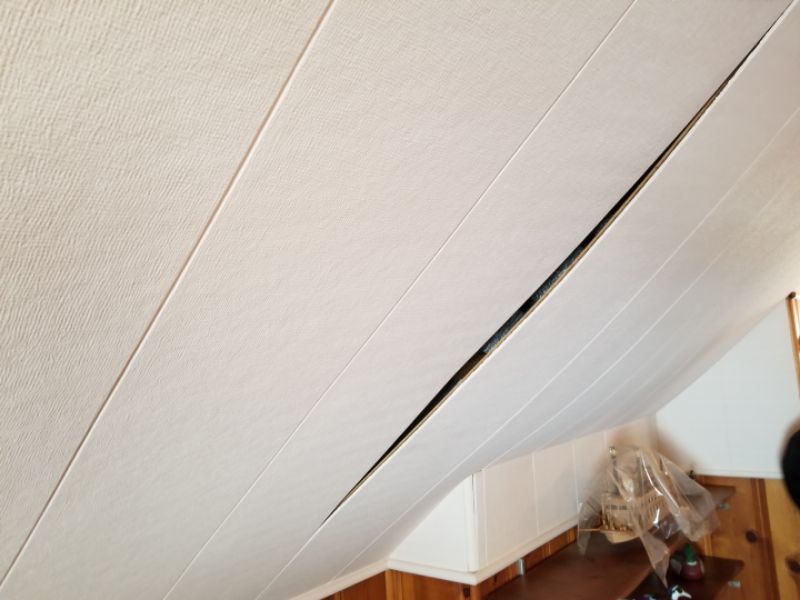
The ceiling is water stained or damaged. Testing with a moisture meter indicates low moisture content (dry) at the time of this inspection. Hire a contractor for an evaluation and to make repairs as needed.
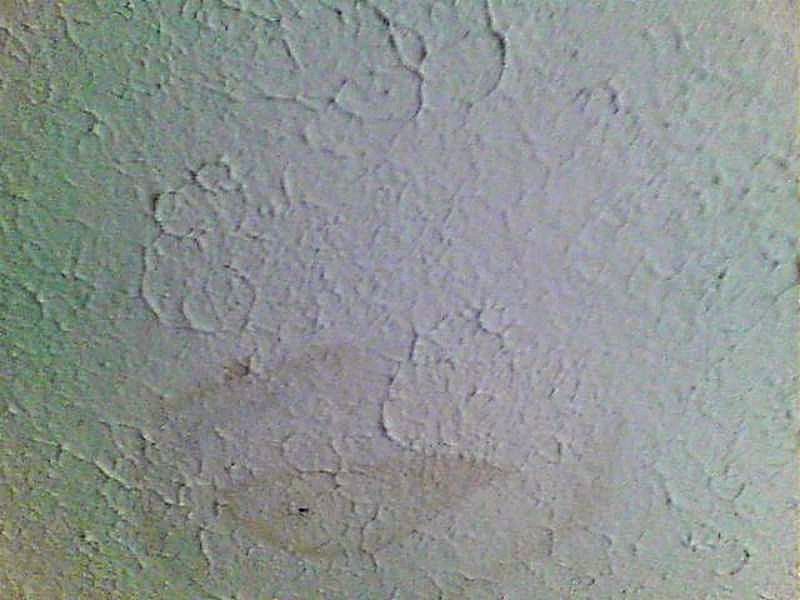
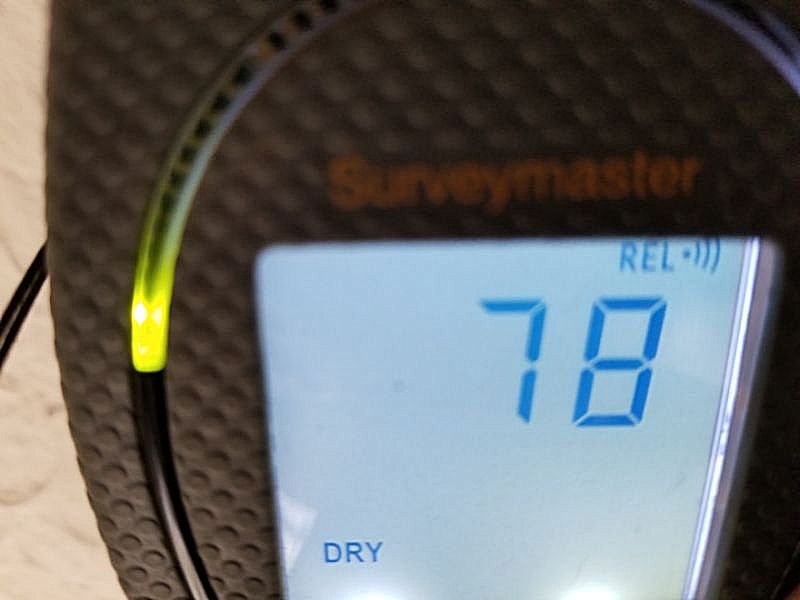
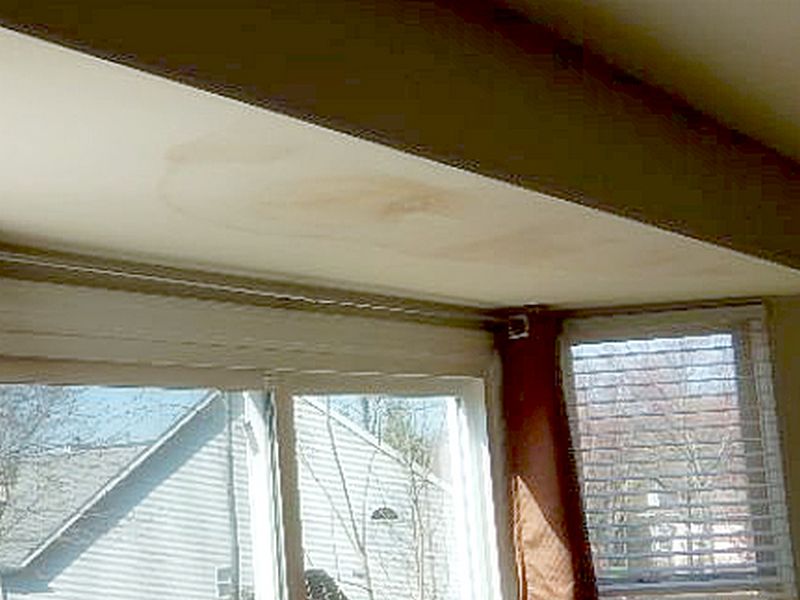
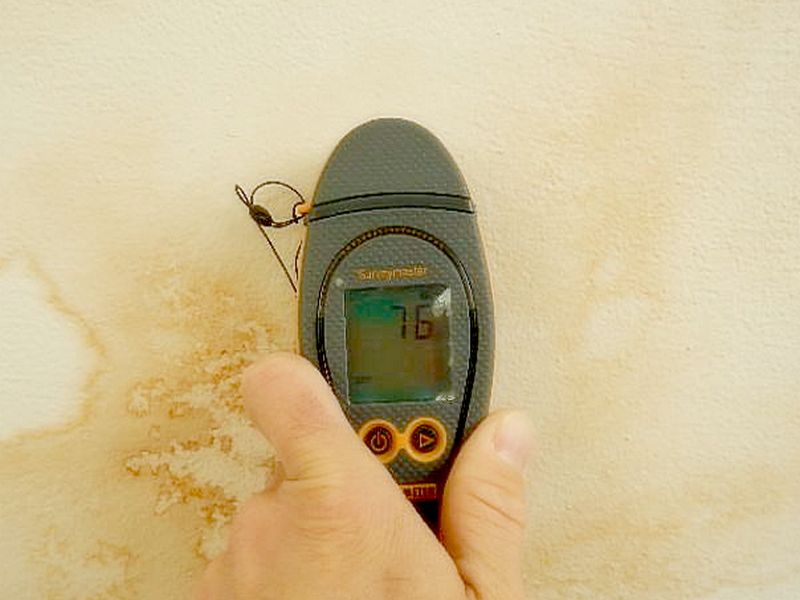
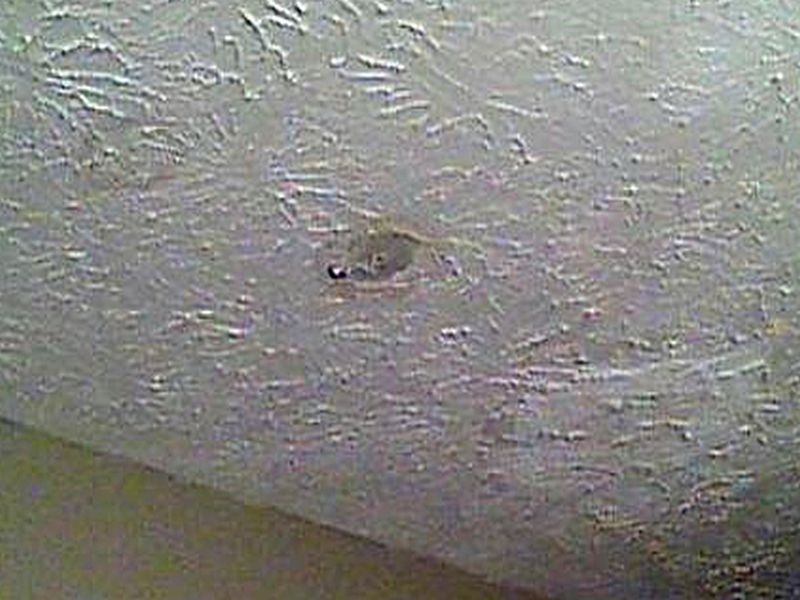
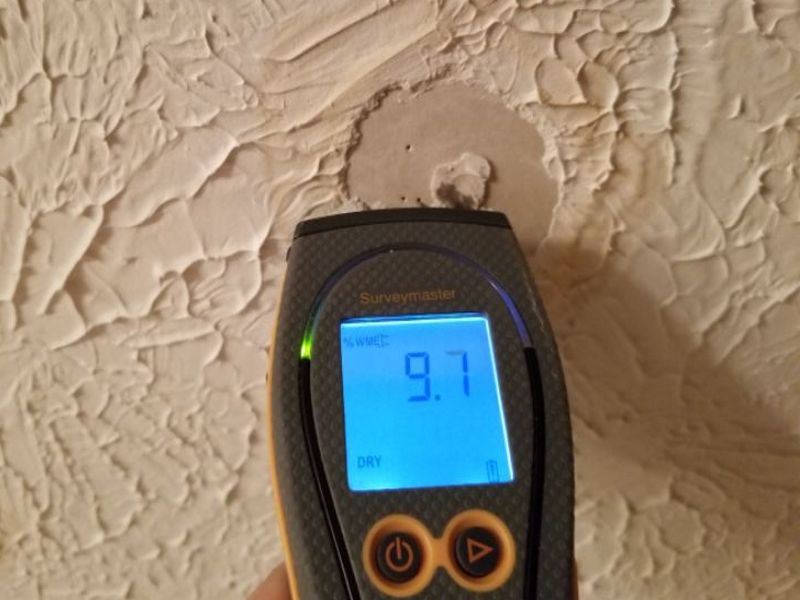
The ceiling is water stained or damaged. Testing with a moisture meter indicates high moisture content at the time of this inspection. There may be hidden damage. Hire a contractor for an evaluation and to make repairs as needed.
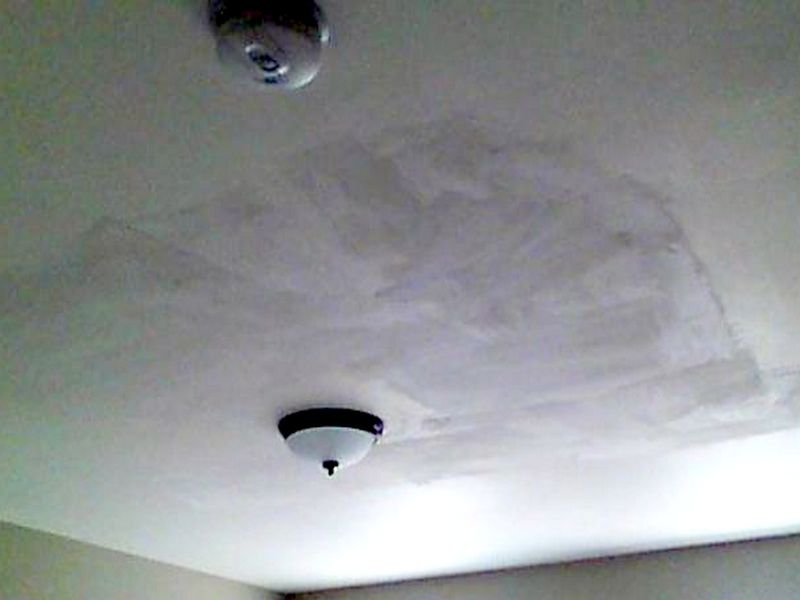
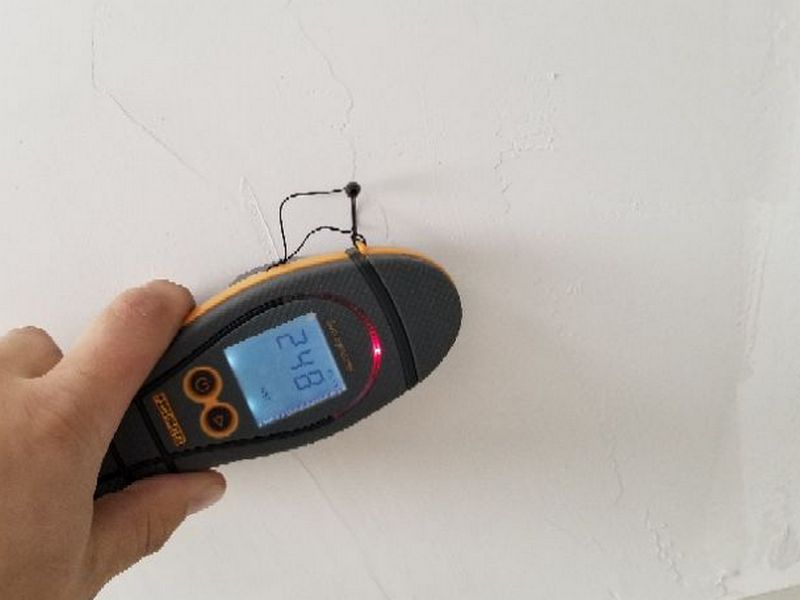
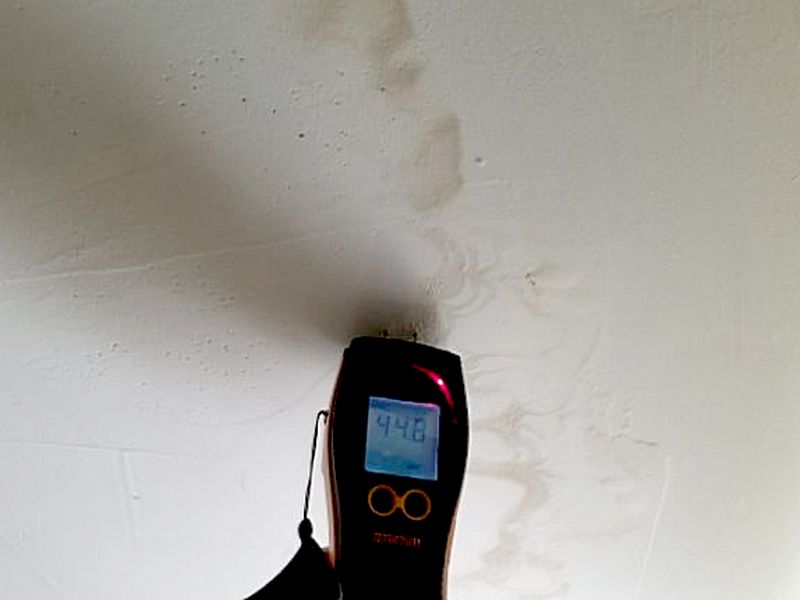
Infrared thermal imaging shows an area in the ceiling with likely water penetration. Testing with a moisture meter indicates high moisture content at the time of this inspection. There may be hidden damage. See the supplied infrared images. Hire a contractor for an evaluation and to make repairs as needed.
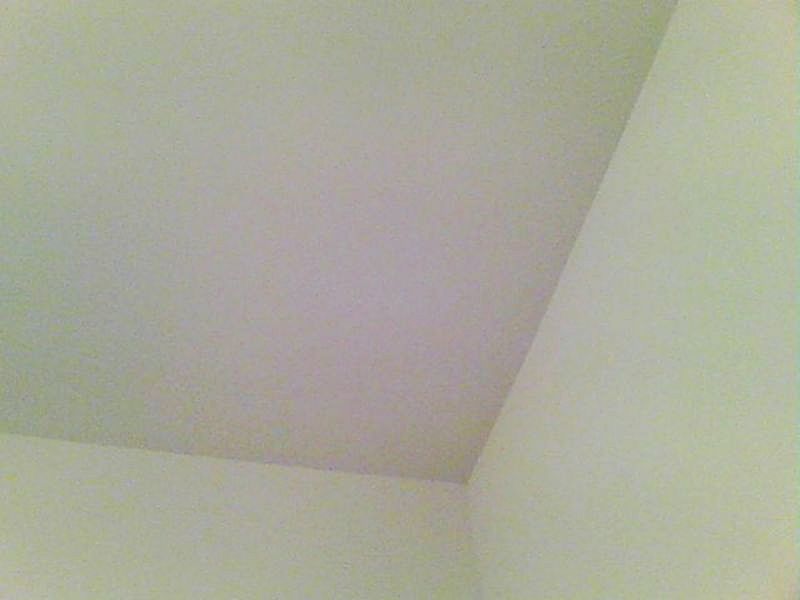
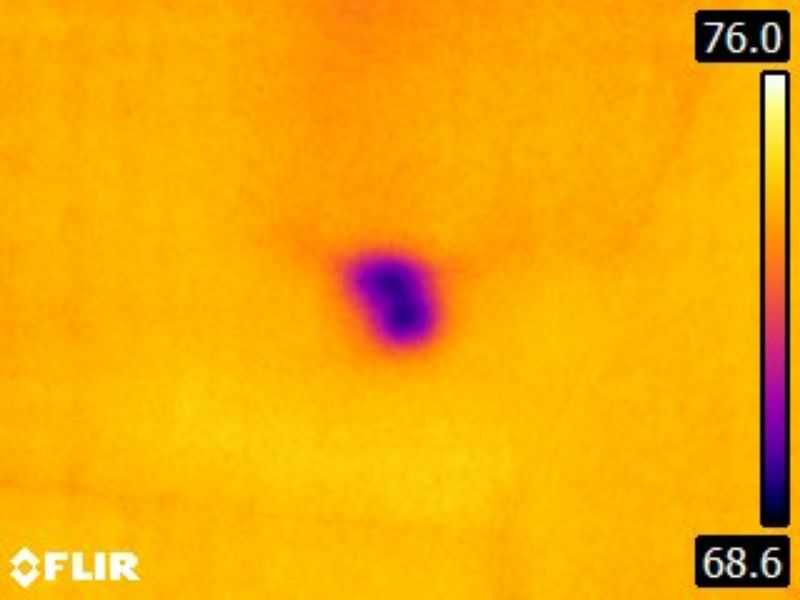
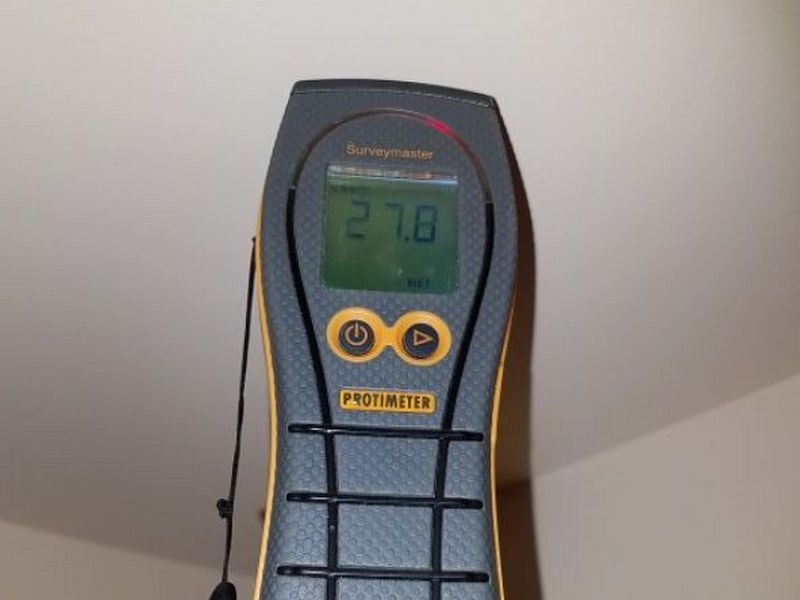
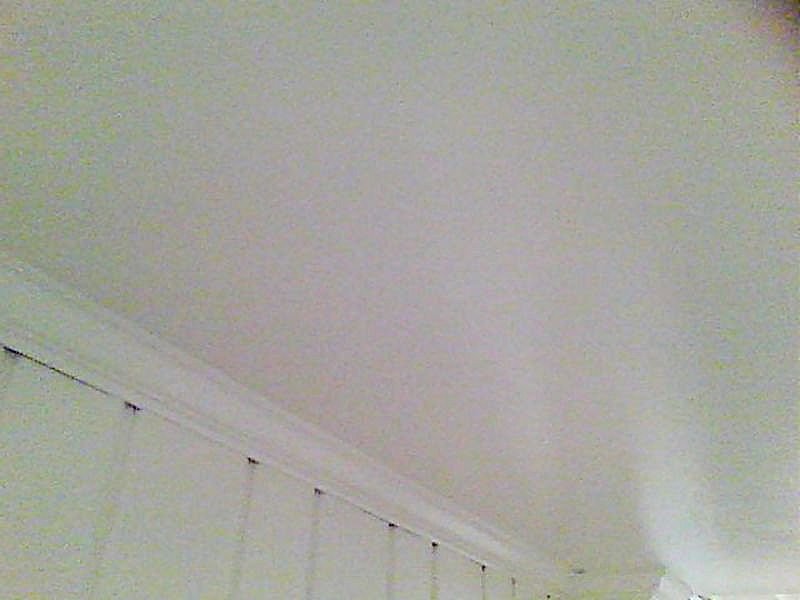
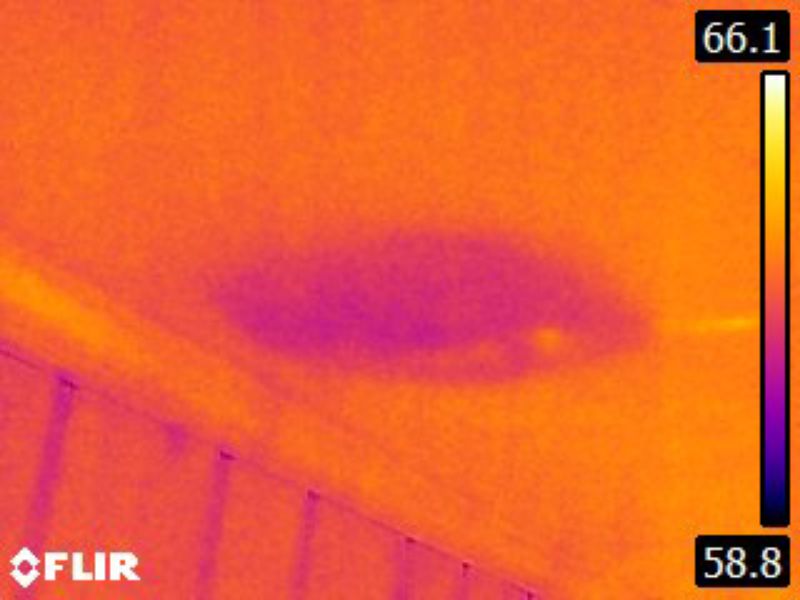
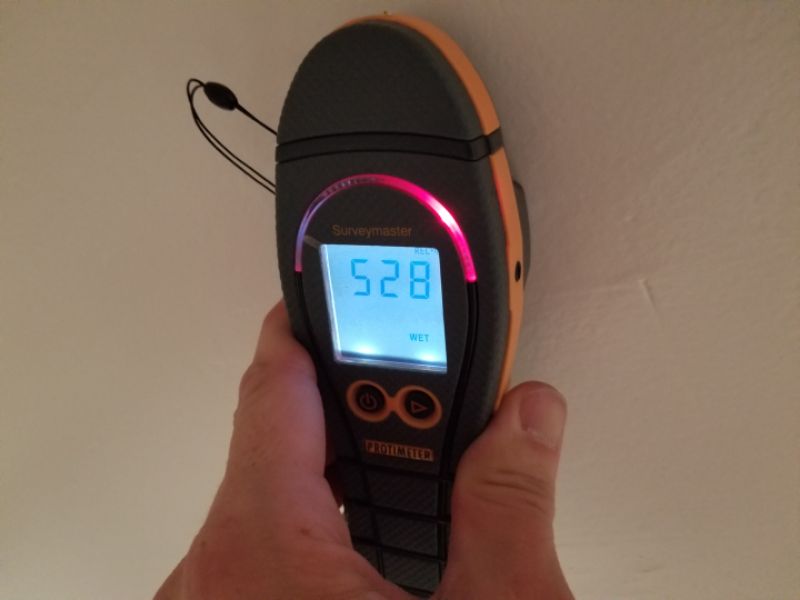
Infrared thermal imaging shows an inaccessible area in the ceiling with likely water penetration. Confirmation with a moisture meter for high moisture content is not possible. There may be hidden damage. See the supplied infrared images. Hire a contractor for an evaluation and to make repairs as needed.
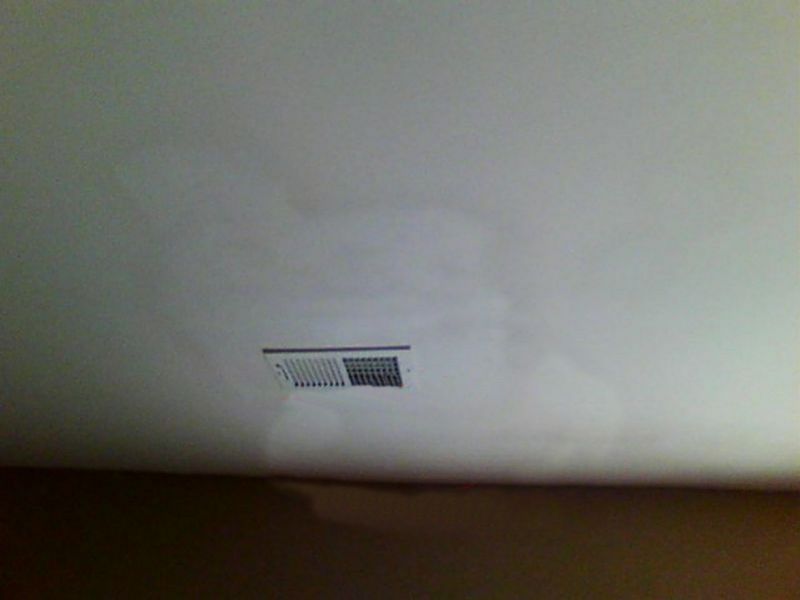
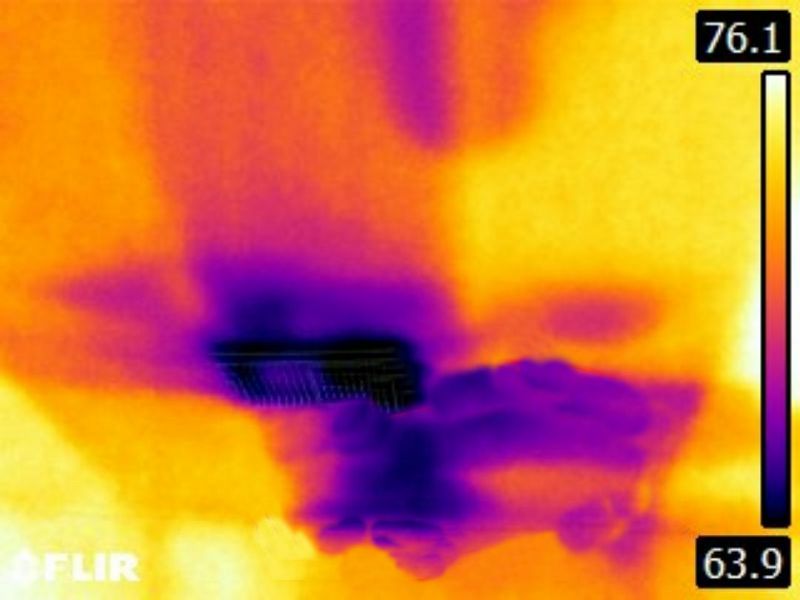
There is a breach (hole, damage or opening) in the fire-rated ceiling. This is a safety concern. Replace the portions of the ceiling with fire-rated material.
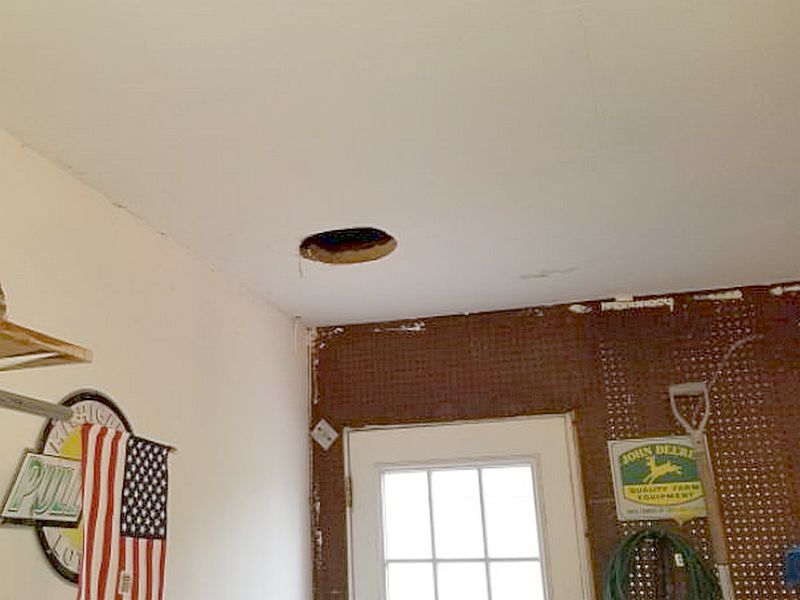
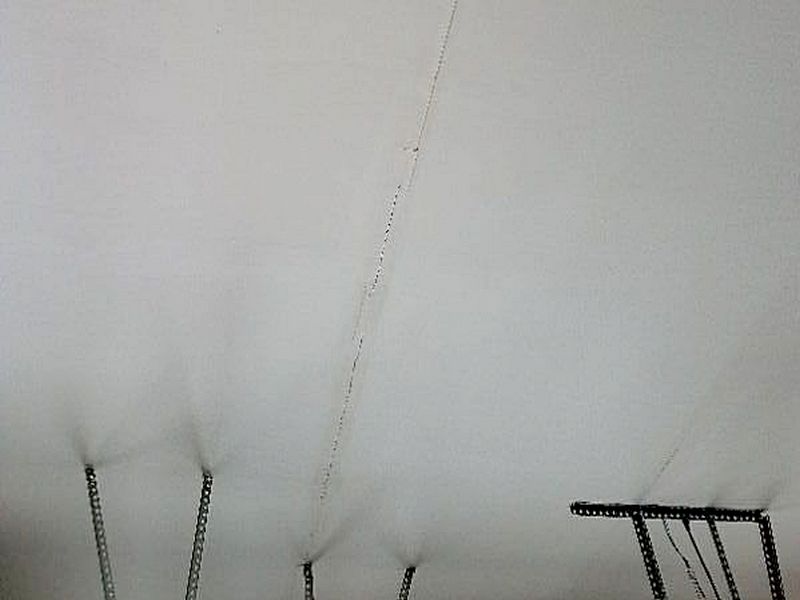
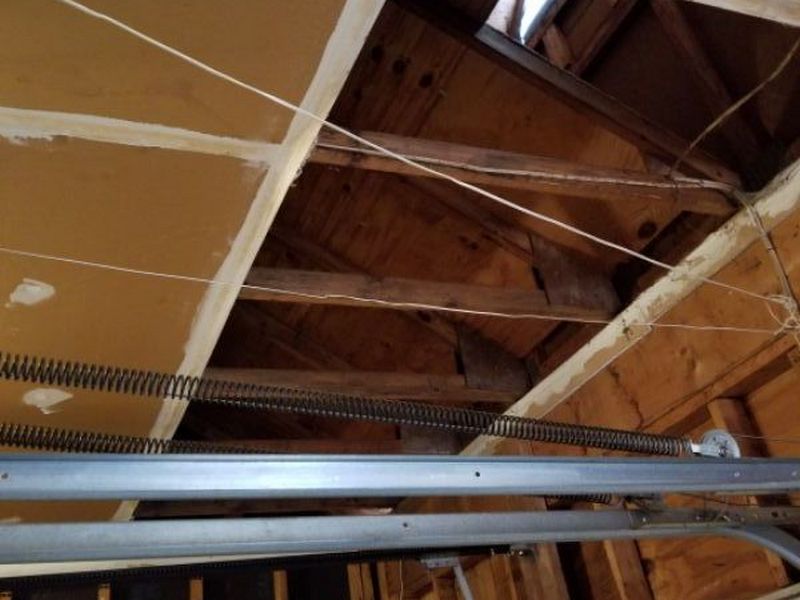
The ceiling separating the garage from the adjacent living area is not fire-rated. This is a safety concern. Replace the ceiling with fire-rated materials.
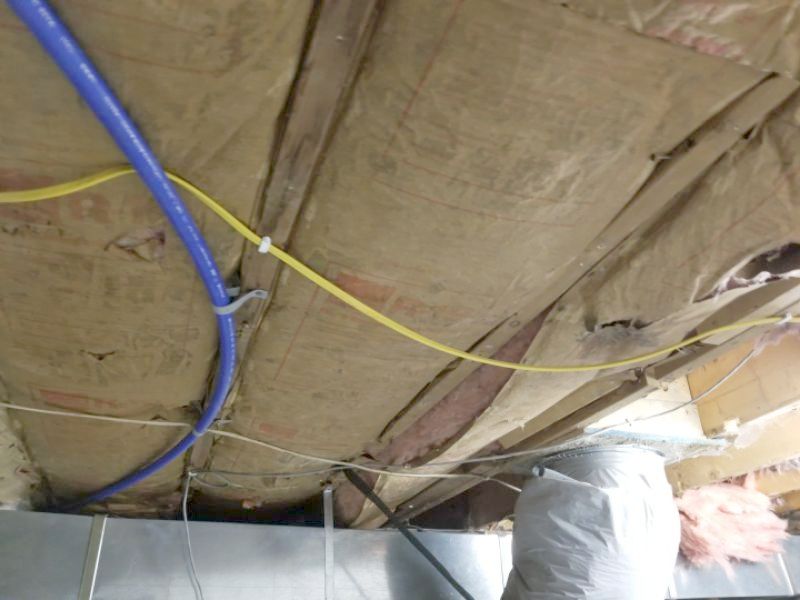
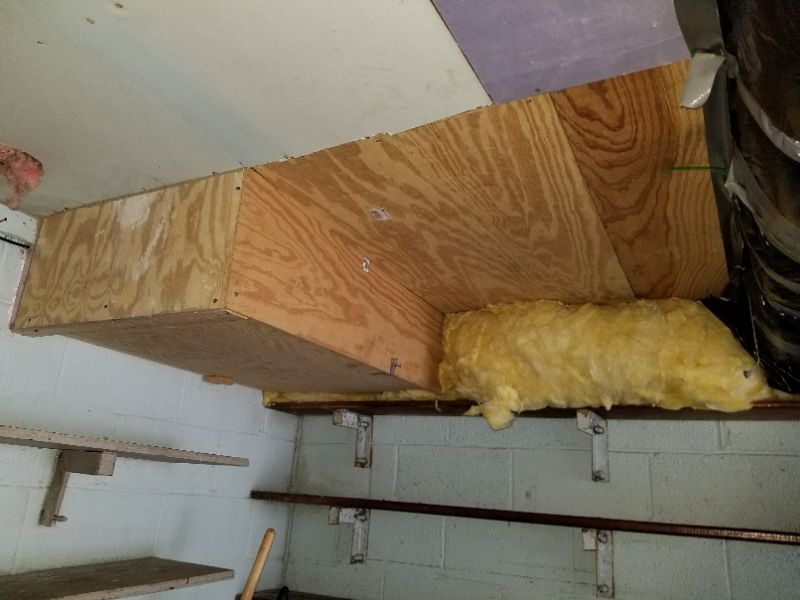
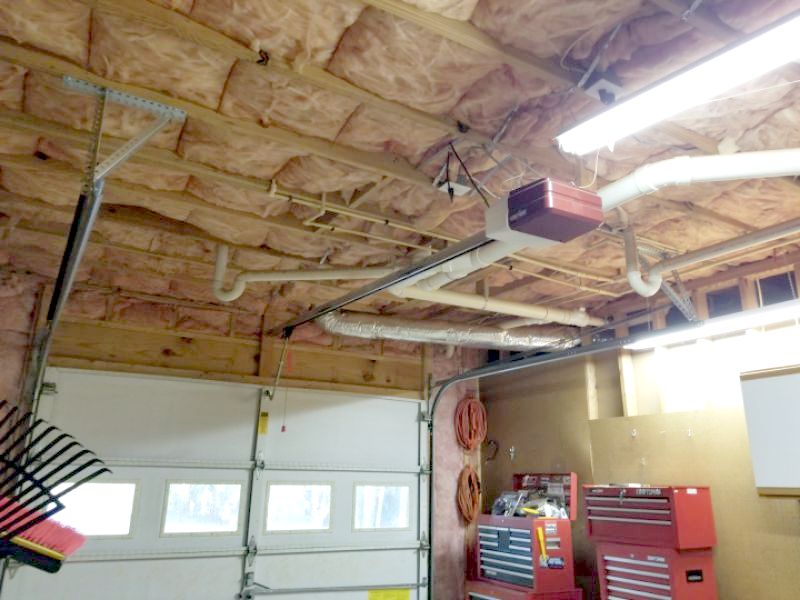
The ceiling tiles are loose or damaged. This is a potential safety hazard. Repair or replace the tiles.
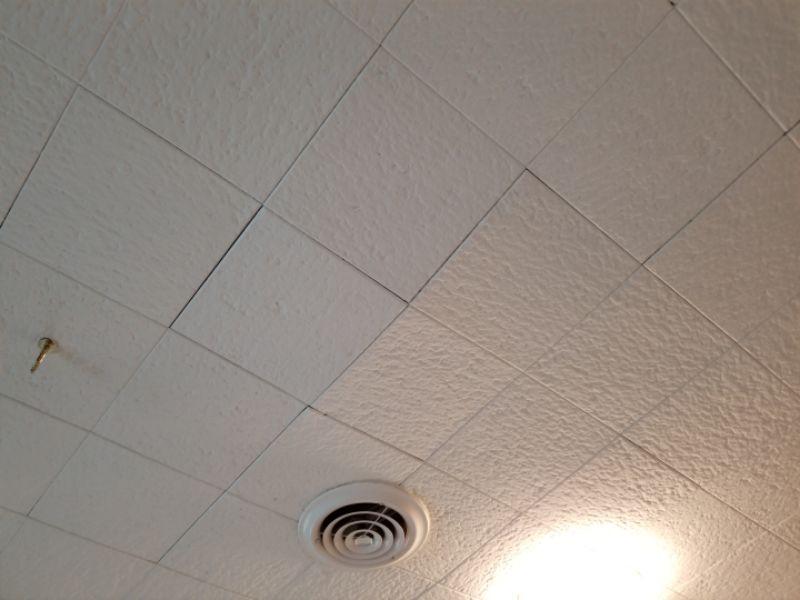
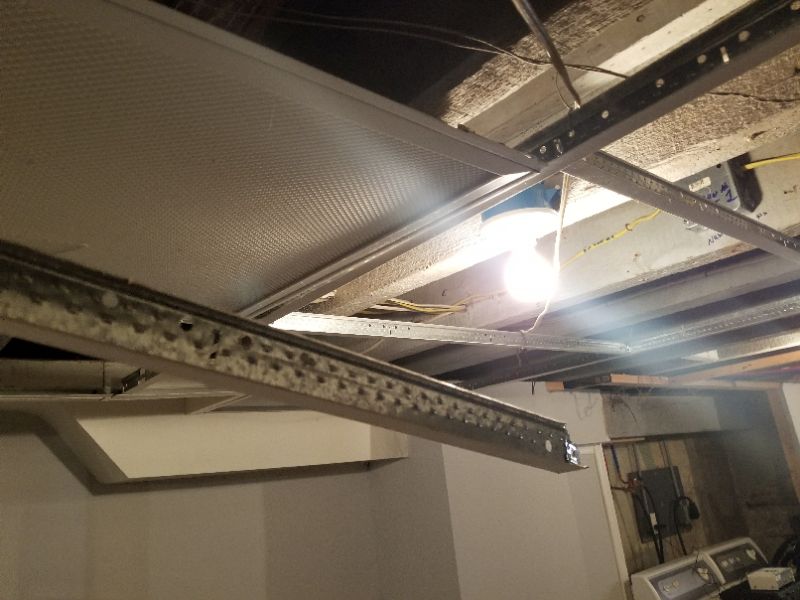
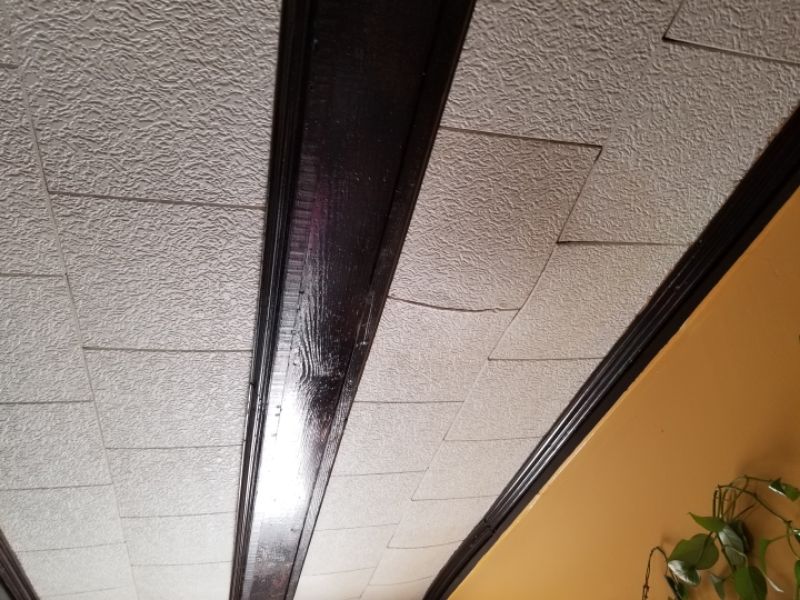
The ceiling tiles are water stained or damaged. Testing with a moisture meter indicates low moisture content (dry) at the time of this inspection. Hire a contractor for an evaluation and to make repairs as needed.
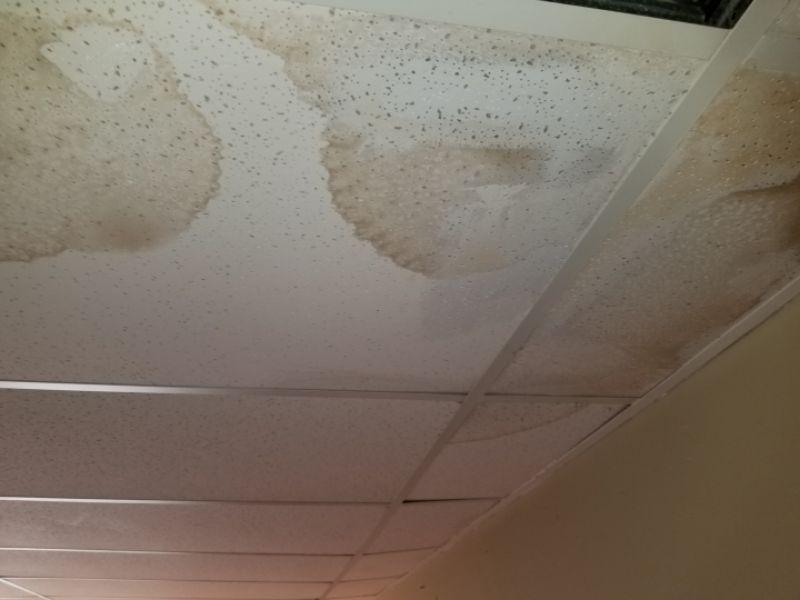
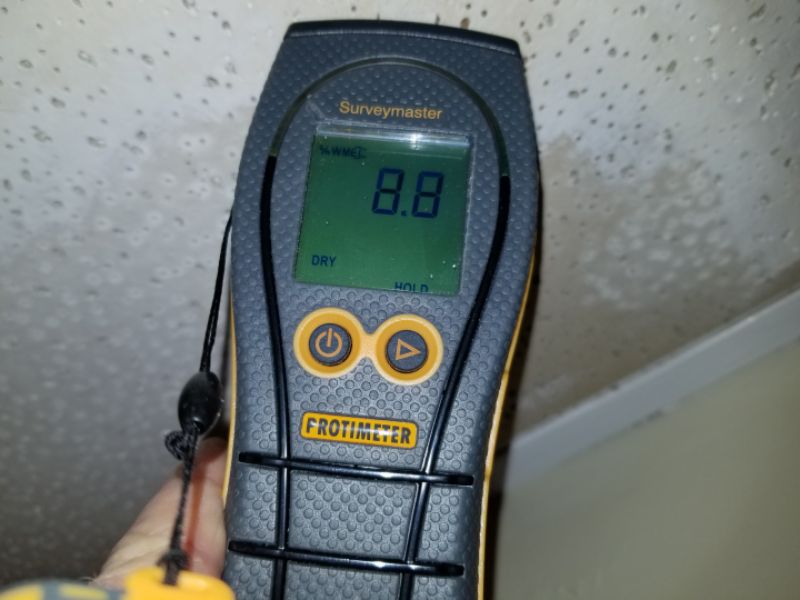
An infrared camera DOES NOT “see” or measure moisture. All it does is show differences in surface temperatures. This has a significant effect on correct image interpretation when working in cold weather.
Evaporative Cooling vs. Thermal Capacity
Evaporative cooling and water’s high thermal capacity are the two reasons we can use infrared to detect possible moisture.
Thermal Capacity
Water’s high thermal capacity, or ability to absorb heat energy, comes into play when moisture is “trapped.” In our work this occurs primarily under roofing membranes, e.g. modified bitumen, EPDM, etc. We normally do not perform roofing membrane inspections as a part of a Home Inspection; we work from the interior of the house.
Evaporative Cooling
Evaporative cooling is the main thermodynamic mechanism that we rely upon to detect possible moisture. This occurs in a “open” system. While we think of a wall or ceiling area as somewhat sealed, they are sufficiently open to allow air and vapor flow.
In order for water to change state from a liquid to a vapor, heat must be added. That heat is drawn from the surrounding materials, e.g., the insulation, framing, drywall, etc. Infrared allows us to see the temperature drop when heat is removed from the building materials to fuel the water’s state change.
Everything looks good. This is the kitchen ceiling just below the master bathroom:
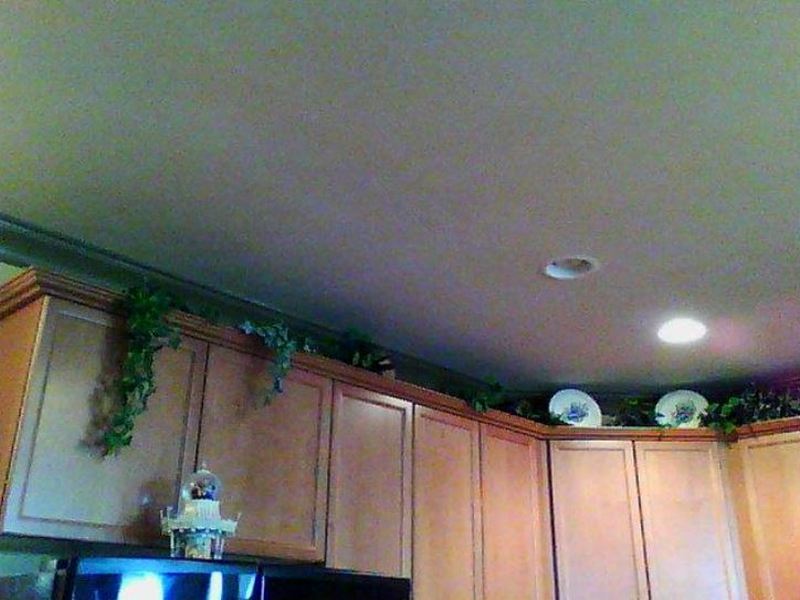
The tub and shower are leaking. Heat is drawn away from the ceiling and floor materials as the water changes state:
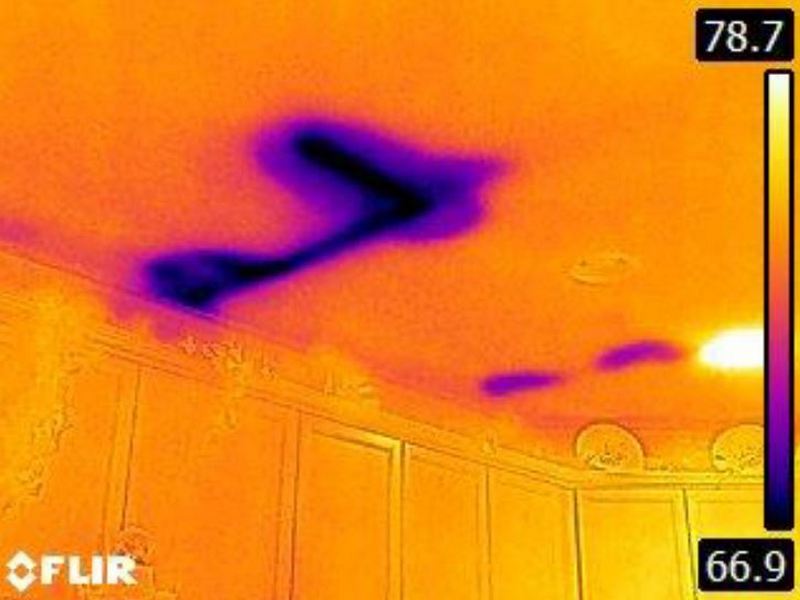
Why does cold weather matter?
First of all, this concerns infrared imaging of exterior walls and ceilings. By exterior, we mean that the other side of the surface is an unconditioned area. This applies to a ceiling below an unconditioned attic as well as a home’s actual “exterior” wall structure. This does not apply to fully interior walls, or to ceilings below conditioned areas, i.e. the 1st. floor ceiling in a 2-story house.
Cold weather matters because, as noted, we rely primarily on evaporative cooling to detect possible moisture. Simply put, water has a hard time changing from a liquid to a vapor when it’s 45°F outside. True, some heat conducts into the wall cavity in a heated house. But the colder it is outside, the harder evaporative cooling becomes. In the Winter cold spots are much more likely to indicate an insulation anomaly.
Confirm suspected moisture with your meter whenever possible!
Visible light image in Winter:
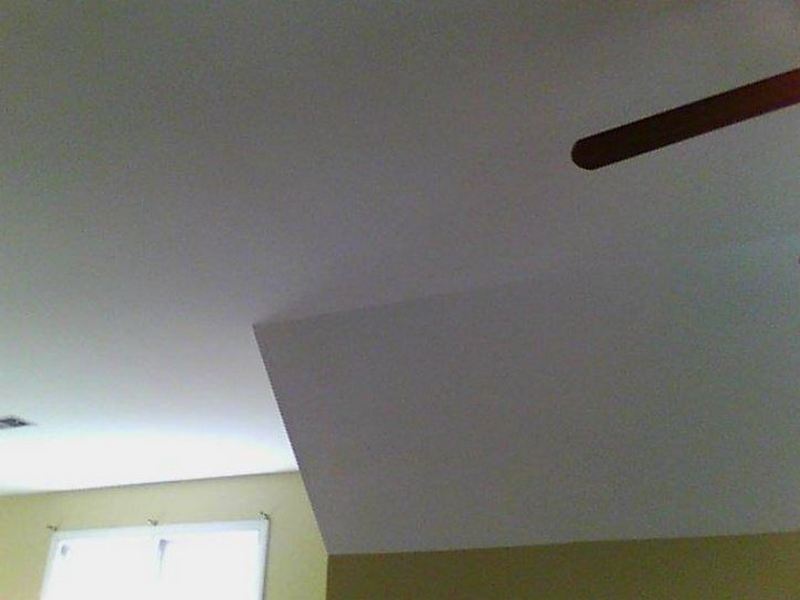
IR image: why would moisture flow downwards like this? Confirm with your moisture meter; it’s an insulation anomaly!
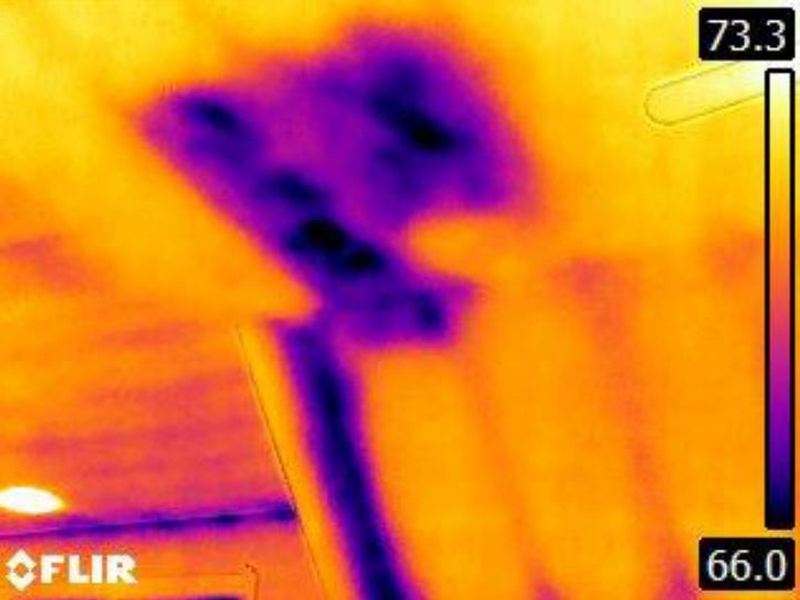
Winter IR image: the ceiling isn’t insulated, and it’s too cold for evaporative cooling. Use your moisture meter.
